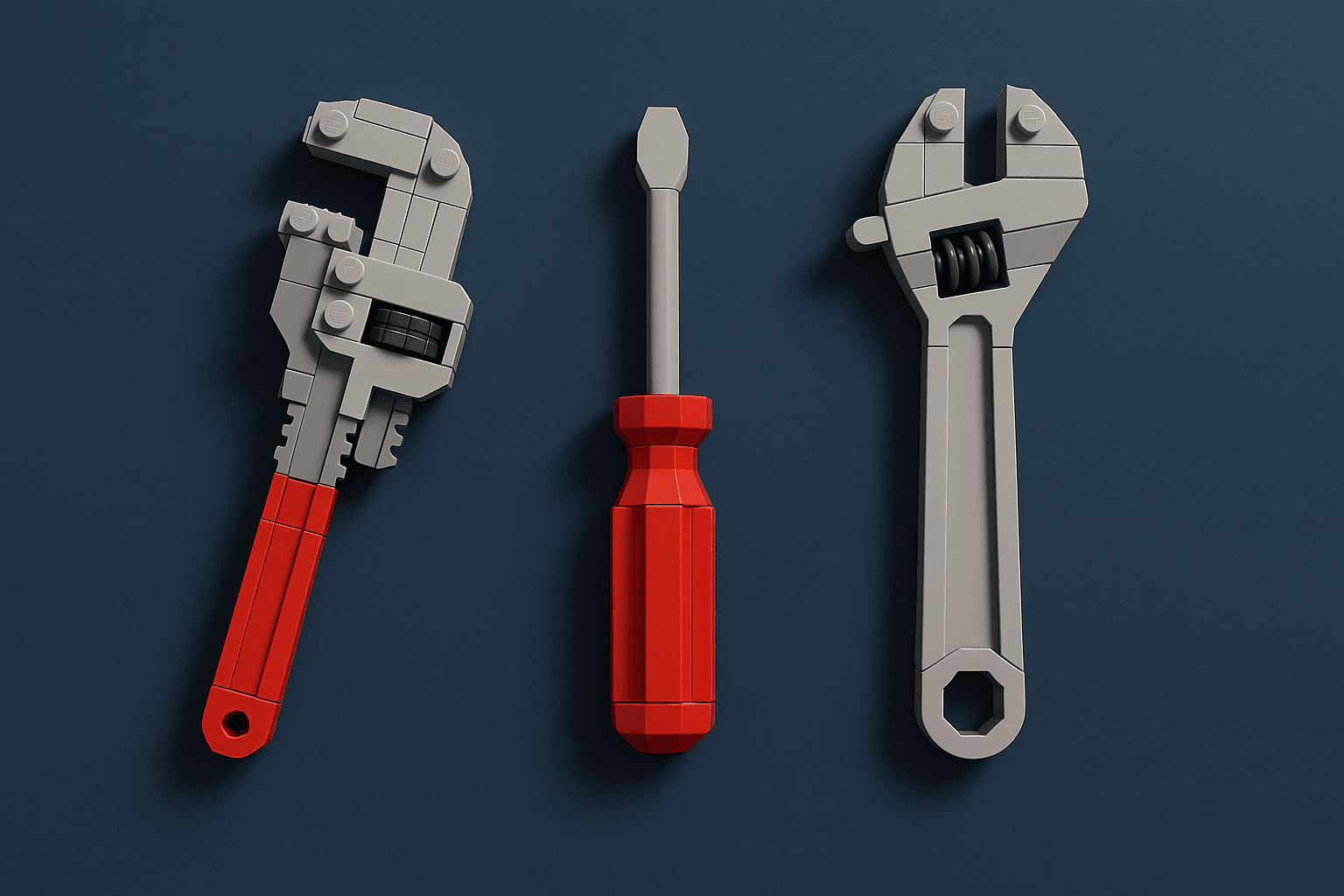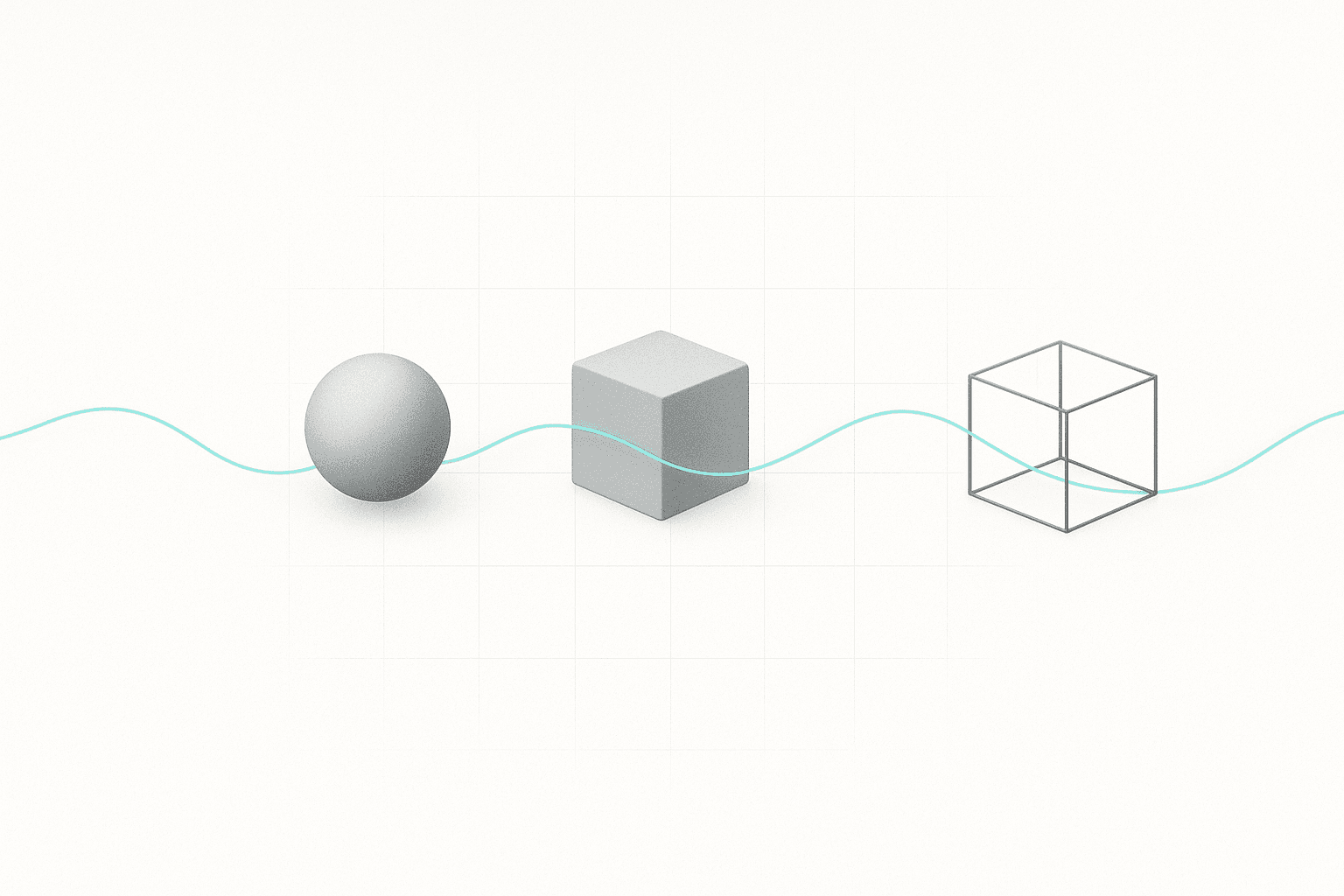Best ERP Integration Tools for High Growth E-Commerce Brands (2025)
ERP integration tools connect your e-commerce storefront (like Shopify or Adobe Commerce) with back-office systems like NetSuite, QuickBooks, or Dynamics 365, making sure orders, inventory, and customer data stay in sync across every touchpoint.
In 2025, real-time data exchange is a necessity and without integration, you’re facing order delays, stock discrepancies, and reporting chaos.
This guide breaks down the top ERP integration tools for e-commerce brands, including plug-and-play connectors, cloud-native iPaaS platforms, and automation-first solutions. Whether you’re scaling DTC operations or replatforming to unify backend workflows, we’ll help you pick the right tools that match your business needs.
What Are ERP Integration Tools? (And Why They’re Critical in 2025)
ERP integration tools connect your e-commerce storefront (like Shopify or Adobe Commerce) with backend systems like NetSuite, QuickBooks or Dynamics 365, in real-time. Without them, orders get lost, inventory gets misreported, and teams waste hours syncing data manually.
In 2025, global e-commerce sales are expected to surpass $7.4 trillion. That scale means more SKUs, more fulfillment complexity, and less margin for sync errors. Manual updates just can’t keep up, and failed integrations lead to backorders, order cancellations, and refund spikes.
Modern ERP integration tools solve three core challenges:
-
Automated Data Sync: No lag, no mismatched inventory. ERP tools update your catalog, pricing, and availability instantly across systems.
-
End-to-End Automation: From order capture to invoicing, integration removes the manual grunt work that slows scaling.
-
Accurate, Centralized Records: Customer, product, and order data flow to one source of truth. Your ERP.
For DTC brands and multi-channel retailers, ERP integration is the difference between:
-
Overselling vs inventory accuracy
-
Refund loops vs real-time sync
-
Manual ops vs scalable automation
As a result, you get higher customer satisfaction, lower ops costs, and a system that scales without burning your team out.
Top 5 ERP Integration Tools for E-Commerce in 2025
Here’s a breakdown of the top solutions for 2025, focusing on what each does best and who they're right for.
Celigo: Shopify - NetSuite Integration Specialist
| Category | Details |
|---|---|
| Best For | Mid-sized eCommerce brands using Shopify and NetSuite |
| Supported Platforms | Shopify, NetSuite, Salesforce, QuickBooks |
| Key Differentiator | Prebuilt Shopify–NetSuite flows via integrator.io with error handling, order sync, and inventory updates |
| G2/Gartner Position | Highly rated for iPaaS by G2, consistently recognized for Shopify–NetSuite integration |
| Ranked #1 iPaaS by G2 (Spring and Summer 2025), holding top spot for six consecutive quarters | |
| Enterprise Use Case | Used by DTC brands to automate order, inventory, and fulfillment sync with <1-day deployment time |
If your stack is Shopify + NetSuite, Celigo gets you live faster than custom builds, with less IT dependency.
Boomi: Enterprise-Scale Integration Platform
| Category | Details |
|---|---|
| Best For | Enterprise operations with high-volume EDI/API requirements |
| Supported Platforms | SAP, Oracle, Microsoft Dynamics, NetSuite, 1000+ SaaS and on-prem apps |
| Key Differentiator | Unified platform combining application integration, data pipelines, and EDI, optimized for high-volume throughput |
| G2/Gartner Position | Leader in Gartner MQ 2025 for iPaaS 4.4 G2 rating |
| Enterprise Win | Supports complex multi-brand, multi-region commerce setups with real-time transaction volume >1M/day |
Boomi isn’t for plug-and-play. It’s for building custom, enterprise-grade data infrastructure with long-term scale in mind.
Workato: Business-User Friendly Automation
| Category | Details |
|---|---|
| Best For | Teams who want to build and manage automation without writing code |
| Supported Platforms | NetSuite, SAP, Shopify, BigCommerce, 1000+ apps |
| Key Differentiator | Prebuilt recipes + smart triggers + governance layers for business + IT collaboration |
| G2/Gartner Position | Rated 4.9/5.0 on G2 as of May 2025 Recognized as a Gartner MQ Leader and Customers' Choice for iPaaS 2025 |
| Enterprise Win | Commonly used to automate workflows across order-to-cash, customer service, and finance without developer bottlenecks |
Choose Workato if you want non-technical teams to own workflows without sacrificing governance or reliability.
MuleSoft: API-First Integration Platform
| Category | Details |
|---|---|
| Best For | Engineering teams building custom, API-led commerce systems |
| Supported Platforms | All REST/SOAP/API-enabled systems; connects to Salesforce, SAP, AWS, legacy systems |
| Key Differentiator | Anypoint Platform manages the entire API lifecycle, from design and deployment to monitoring |
| G2/Gartner Position | Leader in API management Frequently used in Fortune 500 retail |
| Enterprise Win | Used to create modular integration layers across custom order engines, PIM, ERP, OMS, and CDP platforms |
MuleSoft is not a connector but an architecture layer. Use it when integration needs to be composable, reusable, and governed.
Zapier: SMB-Focused Integration Tool
| Category | Details |
|---|---|
| Best For | Small businesses needing quick automations across cloud apps |
| Supported Platforms | 5000+ web apps including Shopify, QuickBooks, Google Sheets, Slack, HubSpot |
| Key Differentiator | Trigger-based, point-and-click automation with templates for common e-commerce use cases |
| G2/Gartner Position | High Ease-of-Use rating and #1 SMB popularity on G2 |
| Enterprise Win | Often used by early-stage merchants to automate inventory sync, email alerts, and report generation |
If your ops are still spreadsheet-driven, Zapier is the fastest way to stitch your stack together, no devs needed.
Types of ERP Integration Tools (iPaaS, API, Middleware & More)
Not all ERP integrations are built the same. The right architecture depends on your system complexity, data volumes, and long-term flexibility needs. Below is a breakdown of the four dominant approaches - when to use each, and what they mean for e-commerce operations.
| Integration Type | When to Use | Who Uses It | Quick Take |
|---|---|---|---|
| Cloud-Based iPaaS | Multiple apps, fast time-to-value, limited dev resources | Mid-market retailers scaling fast | Visual builders, fast deploys. Not built for deep customization. |
| Point-to-Point | Direct sync between two platforms | DTC brands with simple stacks | Low overhead. Breaks at scale. |
| Middleware/ESB | Complex logic across 5+ systems, high volume ops | Enterprise retailers, global brands | Enterprise-grade control. Costly and IT-dependent. |
| API Gateways | Need API governance across headless or multi-channel ops | Digital-native, composable commerce teams | Scalable, secure. Needs API maturity internally. |
Cloud-Based Integration Platforms (iPaaS)
If you’re working with a modular stack, say, Shopify Plus for commerce, NetSuite for ERP, and ShipBob for fulfillment, an iPaaS platform offers a fast path to integration. Tools like Celigo and Workato allow non-engineering teams to configure flows with drag-and-drop logic, speeding up deployment without deep IT lift.
A mid-market furniture brand used Workato to unify Shopify, NetSuite, and Gorgias. Result: order processing SLAs dropped from 48 to 12 hours, without adding headcount.
Point-to-Point Native Connectors
Native connectors are often embedded in platforms themselves (e.g., Shopify → QuickBooks, or ShipStation → NetSuite). They work well when you’re connecting one system to another, but not when you're orchestrating across five.
Point-to-point logic creates brittle architecture. If one app changes its API or logic, the whole flow breaks.
Enterprise Middleware & ESBs
This is the infrastructure backbone for high-volume commerce. Middleware like MuleSoft (with Anypoint) or TIBCO supports asynchronous messaging, retry queues, routing logic, and event-driven architecture, often across dozens of services.
A global electronics retailer processes 200,000+ daily transactions across warehouse, finance, and customer support systems via a centralized ESB layer.
API Gateways and Management Tools
If your architecture is composable or microservices-driven, API gateways (like Apigee, Kong, or AWS API Gateway) give you critical control points: token management, request throttling, observability, and dynamic scaling. These aren’t integration tools but traffic controllers for your integration strategy.
When to choose: You’re building a headless storefront, supporting multiple APIs for partners and apps, or planning internal developer platforms.
A common mistake is picking a connector for today’s need without considering what happens when your catalog triples or new fulfillment nodes get added. Migrating from point-to-point to middleware is an operational risk. Always assess your 3-year integration roadmap, not just your current fire.
Where ERP Integrations Matter Most in E-Commerce Workflows
Implementing ERP integrations in e-commerce is less about overnight transformations and more about stabilizing operations and enabling scalable, error-resistant workflows. In 2025, successful brands leverage ERP integrations precisely in critical workflow areas that traditionally cause costly breakdowns. Here are the key domains where the right integration tools prove indispensable, illustrated with real-world examples from leading DTC and enterprise brands.
Inventory and Stock Sync
Overselling remains a top customer experience killer, especially when inventory data across ERP, warehouse management systems (WMS), and storefronts is out of sync. Delay in stock updates invites backorders, fulfillment errors, and expensive manual fixes.
The right ERP integration ensures:
-
Live SKU availability across all channels
-
Automated stock deductions immediately post-purchase
-
Real-time low-stock alerts triggering procurement
For instance, a U.S. clothing retailer integrated Shopify and NetSuite via Celigo’s integrator.io platform, enabling real-time inventory synchronization and automated order management. This eliminated manual stock checks and drastically reduced fulfillment errors, stabilizing growth without added headcount.
Order Routing and Fulfillment Logic
At scale, manual routing errors multiply—wrong warehouse assignments, missed SLAs, and inappropriate carrier choices drive up costs and damage brand reputation.
ERP integrations automate:
-
Warehouse assignment based on proximity, priority, or zip code
-
SLA-driven carrier selection and label creation
-
Centralized fulfillment tracking across ERP and OMS
An omnichannel outdoor cooking retailer managing over 12,000 SKUs used Celigo to build automated fulfillment routing supporting BOPIS and ship-from-store models. This integration reduced manual interventions and improved on-time delivery, scaling seamlessly with their expanding retail footprint.
Customer Data Sync
Disparate customer records across ERP, CRM, and helpdesk systems disrupt personalized marketing, precise forecasting, and effective customer care.
Seamless ERP integrations synchronize:
-
Billing and shipping histories
-
Support tickets (e.g., Zendesk, Gorgias)
-
Unified 360° customer profiles inside ERP or CRM
Eyebobs, an eyewear brand, replaced a fragile custom Shopify-NetSuite integration with Celigo’s prebuilt flows, unifying customer data in NetSuite. This eliminated manual order entry, reduced system crashes, and enabled customer service teams to access comprehensive profiles, improving support response and satisfaction significantly.
Finance, Accounting & Tax Compliance
Manual reconciliation between e-commerce orders and finance systems creates risk through errors, late closes, and tax misreporting penalties—especially for brands operating internationally. Effective ERP integration delivers:
-
Automated General Ledger entries per transaction
-
Accurate sales tax mapping by jurisdiction
-
Audit-ready logs with full rollback visibility
A rapidly growing Brazilian beauty brand integrated Shopify with NetSuite using Celigo to automate their entire order-to-cash cycle. This solution accelerated month-end closes and safeguarded compliance with tax regulations across states, drastically reducing manual errors and audit readiness concerns.
How to Choose the Right ERP Integration Tool
Most integration failures aren’t caused by bad features but by mismatched expectations.
Maybe the connector couldn’t handle your order volume during a flash sale. Maybe it broke silently and left your ops team manually cleaning up. Or maybe the implementation was harder than expected, and your IT team gave up halfway through.
To avoid those outcomes, here's how to evaluate ERP integration tools like an operator, not a brochure reader.
| Factor | What to Look For | Why it Matters |
|---|---|---|
| Native Platform Support | Built-in connectors for your commerce stack (e.g., Shopify + NetSuite, Magento + SAP) | Reduces implementation time and failure points. No duct-tape logic. |
| Throughput Capacity | Can it process your peak hourly orders ×3, without delays? Simulate 10K+ SKU syncs | Prevents Black Friday breakdowns and sync delays. |
| Error Detection + Recovery | Does it log sync failures? Can it retry gracefully or alert the right team? | Silent failures = lost orders, angry customers. You need visibility + control. |
| Mapping Flexibility | Can it handle custom fields (e.g., bundles, pricing tiers, split shipments) with logic, not hacks? | Most real-world catalogs aren’t “standard.” Mapping matters. |
| Scalability Model | Is the pricing model usage-based, user-based, or flat? Can you predict costs at scale? | Many tools are affordable at 10 orders/day — and painful at 10K. |
| Implementation Support | Do they offer regional implementation partners or in-house services? | Great tools fail without good onboarding — especially for non-technical teams. |
3 Mistakes That Will Cost You
- Choosing Features, Not Fit:
Just because a tool supports NetSuite doesn’t mean it supports your NetSuite workflows. Ask for real schema compatibility.
- Ignoring Operational Complexity:
You might need a connector today but in 6 months, you’ll need returns workflows, pricing rules, or tax sync. Choose based on your 12-18 month roadmap, not this quarter’s.
- Underinvesting in Implementation:
Even “no code” tools need governance. Most failures happen when business teams are thrown the tool with no integration partner. Budget for setup, QA, and post-launch support. Insist on SLAs.
Optional Proofs to Validate Pre-Purchase
-
Ask for case studies in your vertical (e.g. DTC fashion, industrial B2B).
-
Run a pilot with live SKUs + test orders, not a sandbox demo.
-
Evaluate support response time (live chat vs ticket-only? Regional hours?).
FAQ: Common ERP Integration Questions
How much does ERP integration typically cost?
Costs vary widely depending on your ERP platform, number of systems involved, and level of customization. For mid-market brands, total implementation (licenses, integration, support) often falls between $150K–$750K. Small businesses might see costs closer to $30K–$150K, while complex enterprise builds can exceed $1M. It's standard to allocate 30–50% of this budget to integration alone.
How long does ERP integration usually take?
Timelines typically range from 3 to 12 months, depending on project complexity. Fast-track rollouts for standard stacks (e.g., Shopify + NetSuite) can complete in 3–6 months. More customized, multi-system integrations often take longer. What's critical is not just build time but buffer for QA, UAT, and post-go-live adjustments.
Which ERP systems integrate best with e-commerce platforms?
Cloud-native ERPs like NetSuite, Microsoft Dynamics 365, and Sage Intacct are commonly favored due to strong API ecosystems and certified integrations. Compatibility often depends on your e-commerce stack. For example, Shopify Plus pairs well with NetSuite using prebuilt connectors or iPaaS platforms like Celigo and Workato.
What's the most common ERP integration mistake to avoid?
A common failure point is rushing through data mapping and testing. Brands underestimate how mismatched fields, inconsistent logic, or edge cases (like returns or bundles) can break syncs. Industry best practice is to run multiple test cycles, and if possible, phase the rollout to validate each workflow before going fully live.
How can I ensure my ERP integration will scale with my business?
Scalable integrations share a few traits: modular architecture, real-time sync, and the ability to plug into new systems without full rework. Look for solutions proven to handle 3–5x your current order volume, and ensure your pricing model doesn’t balloon with growth. Avoid hardcoded connectors that lock you into brittle workflows.




